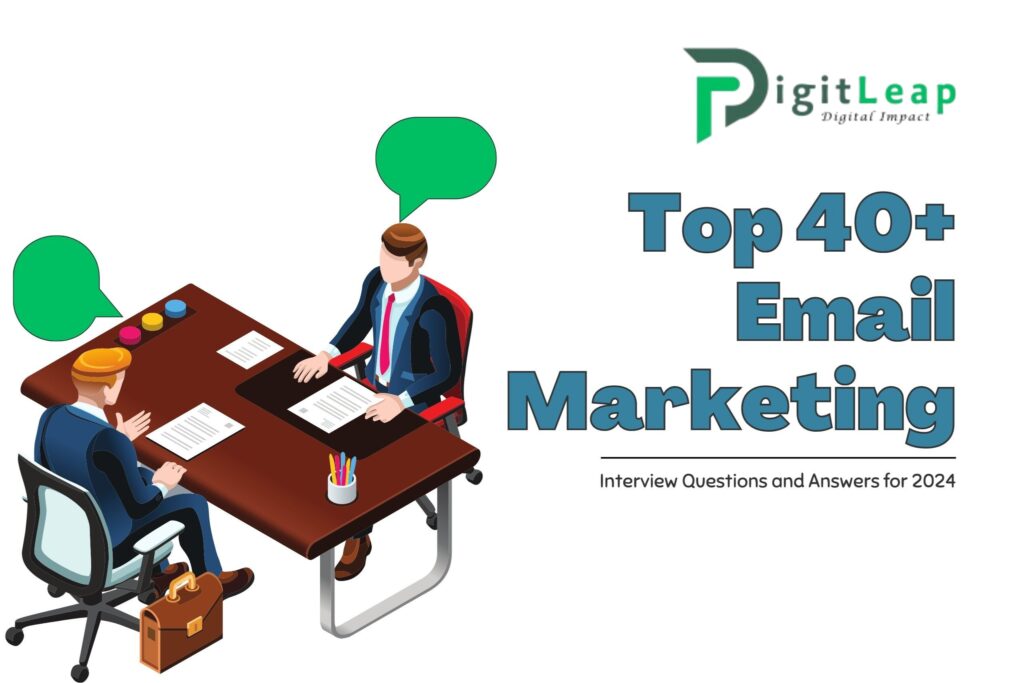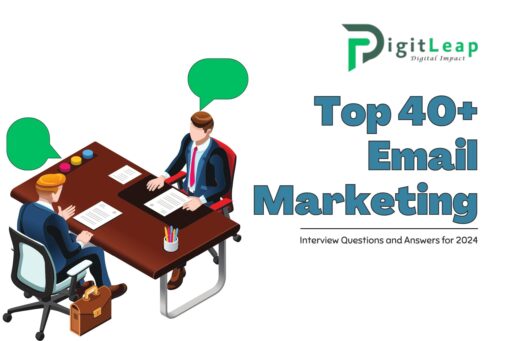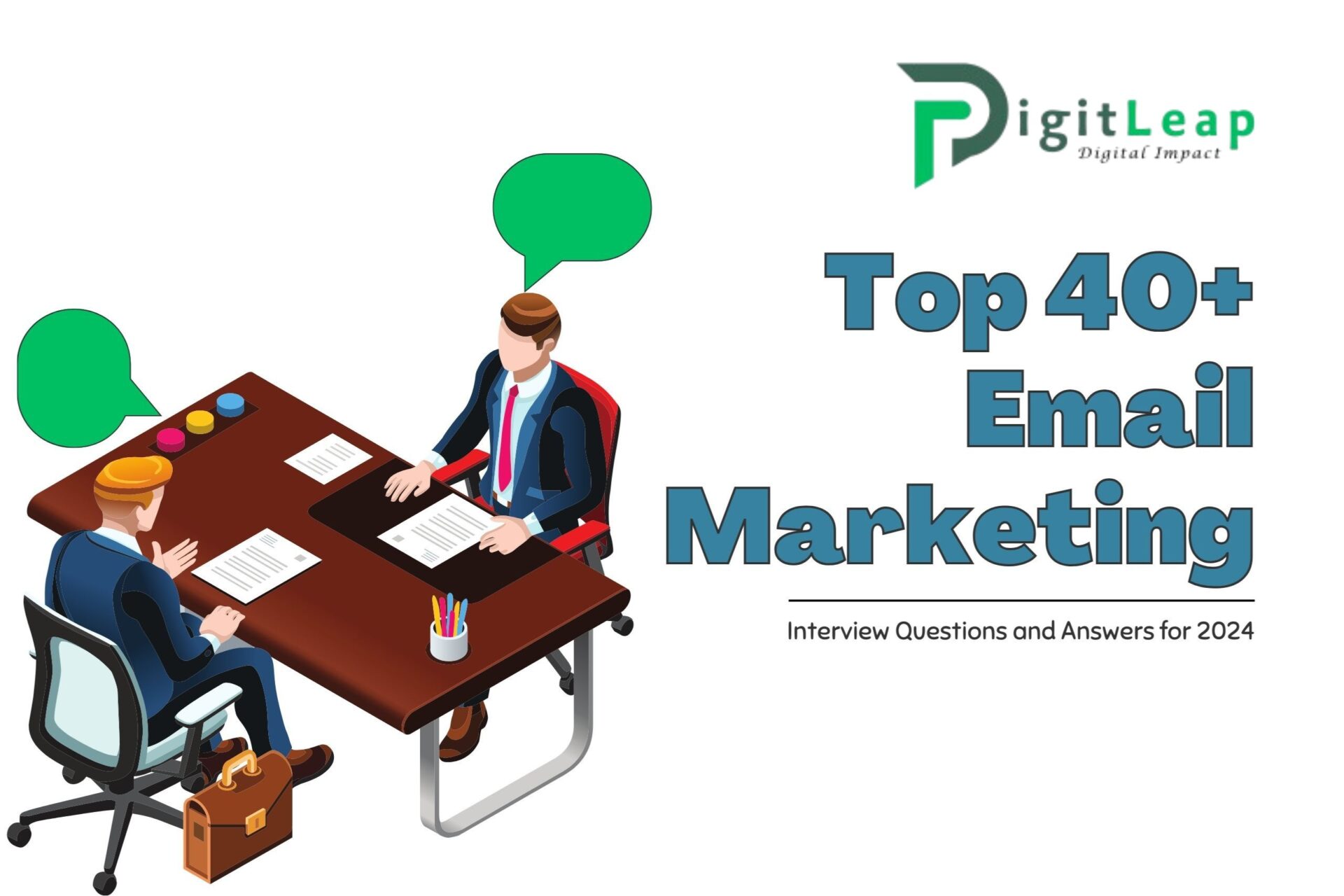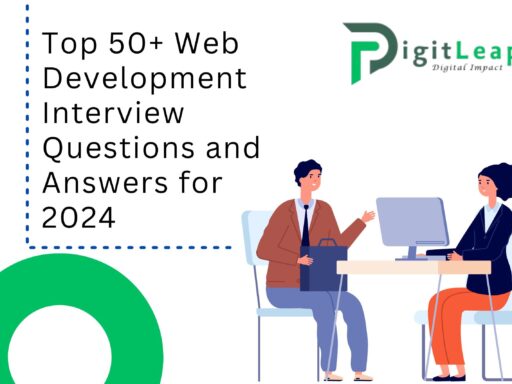Top 40+ Email Marketing Interview Questions and Answers for 2025
As businesses continue to leverage email marketing as a cost-effective and highly targeted communication channel, expertise in this area is increasingly in demand. Whether you’re interviewing for an email marketing role or brushing up on your skills for career growth, here are over 40 key interview questions along with sample answers that reflect the trends and practices expected in 2025.

1. What is email marketing, and why is it important for businesses today?
Answer:
Email marketing involves using email to communicate with prospects and customers to promote products, share news, and build relationships. It’s important because it offers a direct, personalized way to engage audiences, drives conversions, and provides measurable ROI. With advanced segmentation and automation, email campaigns can be highly targeted and cost-effective.
2. Can you explain the role of email automation in modern marketing campaigns?
Answer:
Email automation uses software to send targeted messages based on predefined triggers such as user behavior, purchase history, or engagement levels. This allows marketers to nurture leads, deliver personalized content, and streamline campaign management while saving time and ensuring consistency across touchpoints.
3. What are some key metrics you monitor in an email marketing campaign?
Answer:
Key metrics include open rates, click-through rates (CTR), conversion rates, bounce rates, unsubscribe rates, and overall ROI. Monitoring these metrics helps to evaluate the effectiveness of subject lines, content relevance, and the overall campaign performance.
4. How do you approach audience segmentation in email marketing?
Answer:
Audience segmentation involves dividing your email list into smaller groups based on factors such as demographics, behavior, purchase history, and engagement level. This allows for tailored messaging that resonates with each group, increasing relevance and conversion potential.
5. What strategies do you use for list building and growing your subscriber base?
Answer:
Effective list-building strategies include offering valuable incentives like eBooks or discounts, optimizing website sign-up forms, using social media to promote subscriptions, and implementing double opt-in processes to ensure high-quality subscribers. Regularly cleaning the list to remove inactive users also enhances performance.
6. Can you describe a successful email campaign you’ve managed?
Answer:
(Example Answer) “I once led an email campaign for a seasonal product launch. By segmenting our audience based on past purchase behavior and personalizing the email content, we achieved a 45% increase in CTR and a 25% boost in conversions compared to previous campaigns. We continuously A/B tested subject lines and call-to-action buttons, which contributed to the campaign’s success.”
7. What is A/B testing in email marketing, and how do you implement it?
Answer:
A/B testing involves comparing two variations of an email (such as different subject lines, images, or CTAs) to see which performs better. I implement it by splitting the audience randomly, sending each group a different version, and then analyzing the results based on key metrics to decide which version to roll out to the full list.
8. How do you ensure email deliverability and avoid spam filters?
Answer:
Ensuring email deliverability involves maintaining a clean email list, using a reputable email service provider (ESP), implementing authentication protocols like SPF, DKIM, and DMARC, and creating engaging content that minimizes spam triggers. Regular monitoring of sender reputation and feedback loops with ISPs also helps maintain high deliverability rates.
9. What are some common challenges in email marketing, and how do you overcome them?
Answer:
Common challenges include low open rates, high unsubscribe rates, and deliverability issues. To overcome these, I focus on crafting compelling subject lines, personalizing content, segmenting the audience, testing different elements, and consistently cleaning and updating the email list to remove inactive subscribers.
10. How do you integrate email marketing with other digital channels?
Answer:
Email marketing can be integrated with social media, content marketing, PPC campaigns, and CRM systems. For example, using social media to drive sign-ups, including social sharing buttons in emails, and aligning email content with PPC landing pages creates a cohesive customer journey that reinforces messaging across channels.
11. What role does personalization play in email marketing success?
Answer:
Personalization tailors content to individual subscribers based on their preferences, behavior, or demographics. It increases engagement by making emails more relevant and improves conversion rates by addressing the recipient’s specific needs or interests.
12. Can you explain the importance of mobile optimization in email marketing?
Answer:
With the majority of users accessing emails on mobile devices, it’s essential that emails are mobile-friendly. This means using responsive design, concise content, and easily clickable buttons to ensure a smooth user experience regardless of the device, which in turn boosts engagement and conversions.
13. What are triggered emails, and why are they effective?
Answer:
Triggered emails are automated messages sent based on specific user actions or events, such as welcome emails, abandoned cart reminders, or post-purchase follow-ups. They are effective because they deliver timely, relevant content that meets the user’s immediate needs, thereby increasing the likelihood of conversion.
14. How do you measure the ROI of your email marketing campaigns?
Answer:
ROI is measured by comparing the revenue generated from email campaigns to the costs incurred. This involves tracking conversions, sales data, and other key performance indicators through tools like Google Analytics and your ESP’s reporting features, then calculating the return relative to investment.
15. What is a drip campaign, and how do you set one up?
Answer:
A drip campaign is a series of automated emails sent to a subscriber over a specific period based on their interactions with your brand. To set one up, I define the goal, create a content sequence that nurtures the lead, set triggers based on user behavior, and schedule the emails using an ESP. Continuous monitoring and tweaking help optimize performance.
16. What strategies do you use to reduce unsubscribe rates?
Answer:
To reduce unsubscribe rates, I focus on delivering relevant, high-quality content tailored to the audience’s interests. I also maintain a clean email list, use clear and engaging subject lines, provide options for frequency adjustments, and always include an easy-to-use unsubscribe option to build trust.
17. How do you stay updated with the latest trends in email marketing?
Answer:
I stay updated by following industry blogs, participating in webinars, attending conferences, and networking with other digital marketers. Continuous learning through courses and keeping an eye on updates from leading ESPs also helps me remain current with emerging trends and technologies.
18. What is the role of email segmentation in campaign performance?
Answer:
Segmentation is crucial because it allows you to tailor messages to specific groups of subscribers, ensuring that content is relevant and personalized. This targeted approach improves engagement, increases conversion rates, and ultimately leads to better campaign performance and ROI.
19. How do you use analytics to refine your email marketing strategy?
Answer:
Analytics provide insights into user behavior, campaign performance, and areas for improvement. I use tools like Google Analytics and ESP dashboards to monitor metrics such as open rates, CTR, conversion rates, and bounce rates. These insights help me identify trends, test new approaches, and make data-driven adjustments to optimize future campaigns.
20. What are some best practices for writing effective email subject lines?
Answer:
Effective subject lines are concise, clear, and compelling. They should create a sense of urgency or curiosity, be personalized where possible, and accurately reflect the content of the email. Testing different variations can also reveal what resonates best with your audience.
21. How do you manage email frequency to avoid overwhelming subscribers?
Answer:
Managing email frequency involves striking a balance between staying top-of-mind and avoiding subscriber fatigue. I segment my list based on engagement levels and use frequency capping tools to ensure that recipients aren’t bombarded with emails. Regularly reviewing engagement metrics helps determine if adjustments are needed.
22. What is the significance of A/B testing in email marketing?
Answer:
A/B testing is vital for understanding what works and what doesn’t in your email campaigns. By testing different elements—such as subject lines, content, or images—you can optimize your emails based on real data, leading to higher engagement and better conversion rates.
23. How do you ensure compliance with email marketing regulations?
Answer:
Compliance is ensured by following regulations like GDPR, CAN-SPAM, and other local laws. This involves obtaining proper consent, providing clear opt-out options, including accurate sender information, and maintaining a secure and updated email list.
24. What techniques do you use to re-engage inactive subscribers?
Answer:
To re-engage inactive subscribers, I employ tactics such as sending reactivation emails with special offers, personalized messages asking for feedback, or creating a sense of urgency with limited-time deals. Segmenting inactive users and tailoring content specifically for them can often revive engagement.
25. How important is personalization in your email campaigns?
Answer:
Personalization is extremely important. Tailoring content to individual preferences and behaviors increases relevance, improves engagement, and boosts conversion rates. Techniques such as dynamic content insertion and personalized subject lines are key components of effective email marketing.
26. What role do drip campaigns play in nurturing leads?
Answer:
Drip campaigns nurture leads by providing a series of automated, timely emails that guide subscribers through the customer journey. They help maintain engagement over time, educate the prospect about your offerings, and gradually build trust until they’re ready to convert.
27. How do you balance creativity and analytics in your email marketing strategy?
Answer:
Balancing creativity with analytics involves crafting engaging content while relying on data to guide decisions. I use creative elements to capture attention and analytics to measure performance, ensuring that each campaign is both visually appealing and results-driven. Regular testing and data reviews help refine this balance over time.
28. What are some effective call-to-action (CTA) strategies in email marketing?
Answer:
Effective CTAs are clear, action-oriented, and prominently placed within your email. They should be specific (e.g., “Download Now” or “Get Your Free Trial”) and use contrasting colors to stand out. Testing different CTA designs and placements can help determine which drives the highest engagement and conversion rates.
29. How do you incorporate social proof into your email campaigns?
Answer:
Incorporating social proof, such as customer testimonials, reviews, and case studies, can significantly boost trust and credibility. I often include snippets of positive feedback or success stories in emails, which help reinforce the value of the product or service and encourage recipients to take action.
30. What is triggered email marketing and why is it effective?
Answer:
Triggered email marketing sends automated messages based on specific user actions (like signing up, abandoning a cart, or making a purchase). This timely and relevant communication enhances the customer experience, drives engagement, and can lead to higher conversion rates due to its personalized nature.
31. How do you handle personalization at scale in large email campaigns?
Answer:
For large campaigns, I rely on segmentation and dynamic content tools. By dividing the audience into smaller segments based on behavior and preferences, I can create tailored messages for each group. Dynamic content insertion allows personalization even in mass emails, ensuring that each recipient receives content that feels individually crafted.
32. How do you utilize customer feedback to improve your email campaigns?
Answer:
Customer feedback is invaluable for refining email content and strategy. I regularly review survey responses, direct replies, and engagement metrics to understand what resonates with my audience. This feedback informs adjustments in tone, content, and frequency, helping to continuously optimize campaigns.
33. What are some emerging trends in email marketing for 2025?
Answer:
Emerging trends include increased use of AI for predictive personalization, integration of interactive elements (like quizzes and surveys) to boost engagement, and the growing importance of privacy and data security. Additionally, there’s a trend toward integrating email marketing with omnichannel strategies, ensuring a seamless experience across multiple digital touchpoints.
34. How do you measure long-term success in email marketing?
Answer:
Long-term success is measured through metrics such as customer lifetime value (CLV), retention rates, and overall ROI. It’s important to look beyond immediate conversions and assess how email marketing contributes to ongoing customer relationships and brand loyalty.
35. What role does mobile optimization play in email marketing?
Answer:
With a significant portion of emails opened on mobile devices, mobile optimization is crucial. This includes using responsive design, concise content, and easily clickable buttons to ensure that emails are user-friendly on any device, leading to higher engagement and conversion rates.
36. How do you approach testing and iterating on your email campaigns?
Answer:
I adopt a continuous improvement approach by running regular A/B tests on various elements (subject lines, images, CTAs, etc.). I analyze performance data to identify what works best and make incremental changes over time. This iterative process helps refine my strategy and drive better results in future campaigns.
37. How do you ensure your email marketing strategy aligns with overall business goals?
Answer:
Alignment is achieved by setting clear, measurable objectives for each campaign that tie directly to broader business goals—whether it’s increasing revenue, boosting brand awareness, or improving customer retention. Regular reporting and cross-departmental collaboration ensure that our email marketing efforts support and enhance the overall marketing strategy.
38. What advice would you give to someone starting out in email marketing?
Answer:
My advice is to start by understanding your audience and setting clear objectives. Invest in learning the basics of segmentation, automation, and analytics. Experiment with different content styles and always be prepared to iterate based on feedback. Building a strong foundation with these elements will set you up for long-term success.
39. How do you maintain email list health and ensure high deliverability rates?
Answer:
Maintaining list health involves regular cleaning of inactive or unengaged subscribers, using double opt-in methods, and ensuring compliance with privacy regulations. Monitoring sender reputation and engagement metrics, along with employing robust authentication protocols (SPF, DKIM, DMARC), helps maintain high deliverability.
40. Can you share a scenario where you turned around a failing email campaign?
Answer:
(Example Answer) “In one campaign, I noticed that our open and click-through rates were steadily declining. I performed a deep-dive analysis and found that our subject lines were not resonating with the target audience. By A/B testing new, more personalized subject lines and adjusting our segmentation strategy, we saw a 30% improvement in open rates and a 20% increase in conversions within a few weeks. This turnaround underscored the importance of continuous testing and responsiveness to data insights.”
41. How do you incorporate emerging technologies, like AI and machine learning, into your email marketing strategy?
Answer:
I leverage AI-powered tools for tasks such as predictive personalization, dynamic content generation, and automated segmentation. These technologies help refine targeting, optimize send times, and tailor content to individual preferences, thereby increasing engagement and conversion rates.
Conclusion
Mastering email marketing requires a deep understanding of both strategic planning and hands-on execution. By preparing for these interview questions and continually honing your skills, you can demonstrate your expertise in creating engaging, data-driven campaigns that drive results. These questions cover a broad spectrum—from technical insights to creative strategies—ensuring that you are well-prepared to succeed in an ever-evolving digital landscape.






